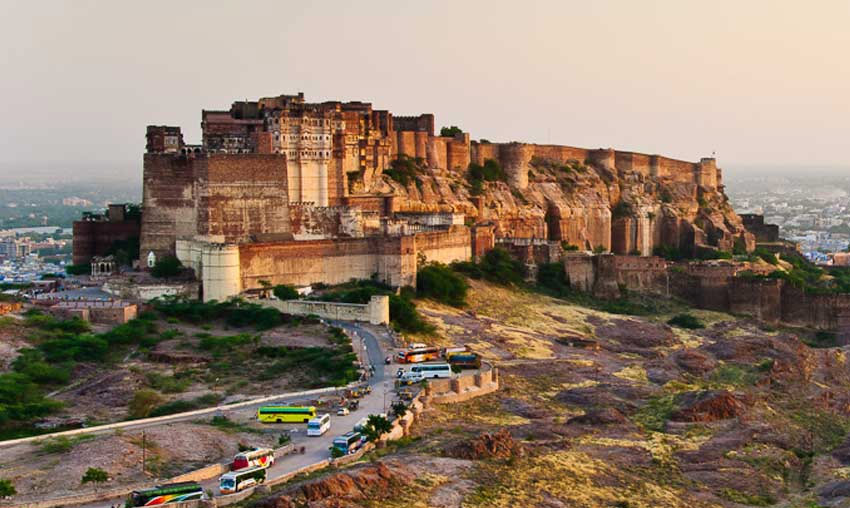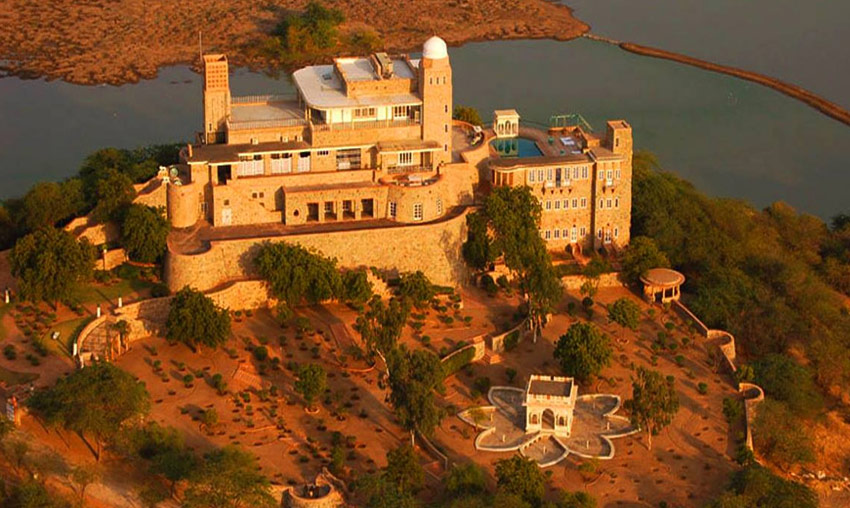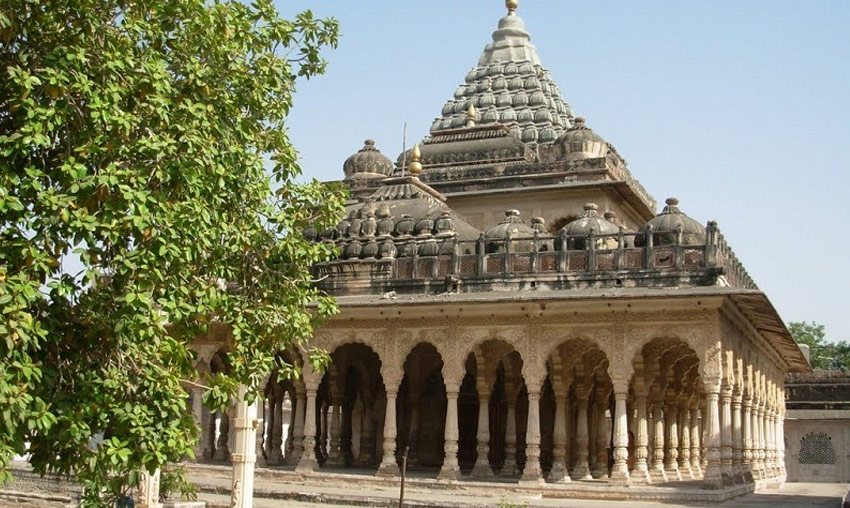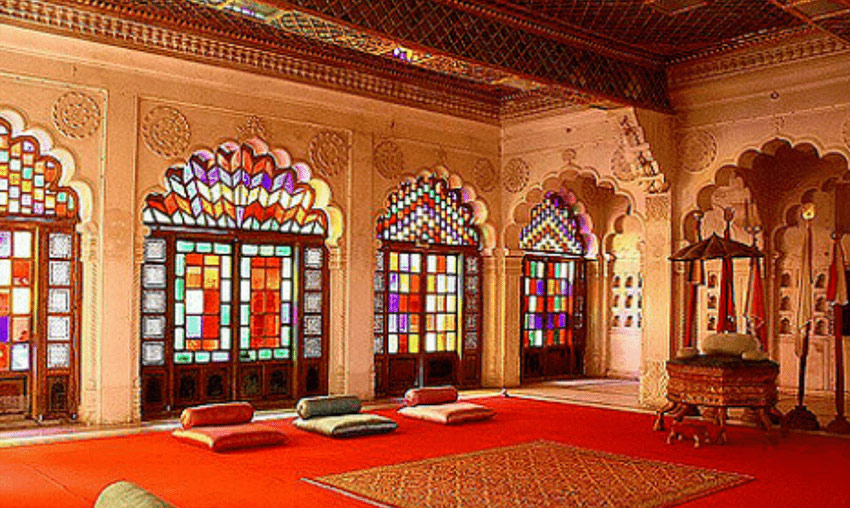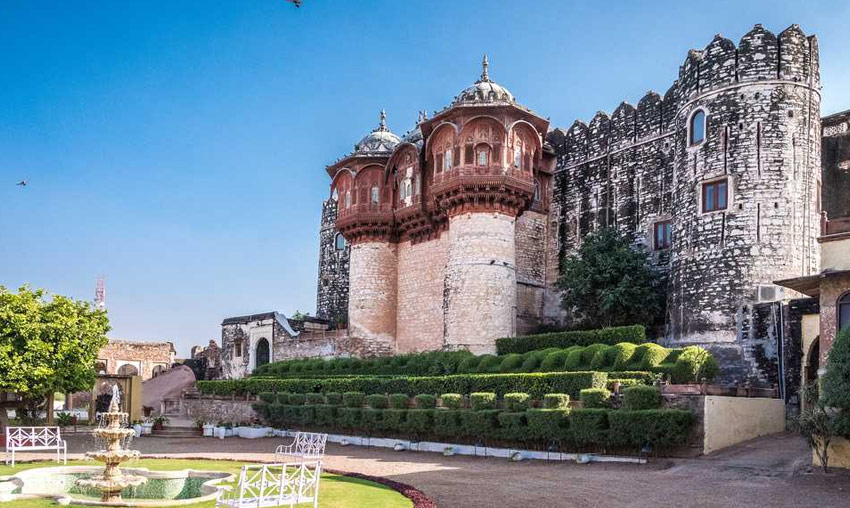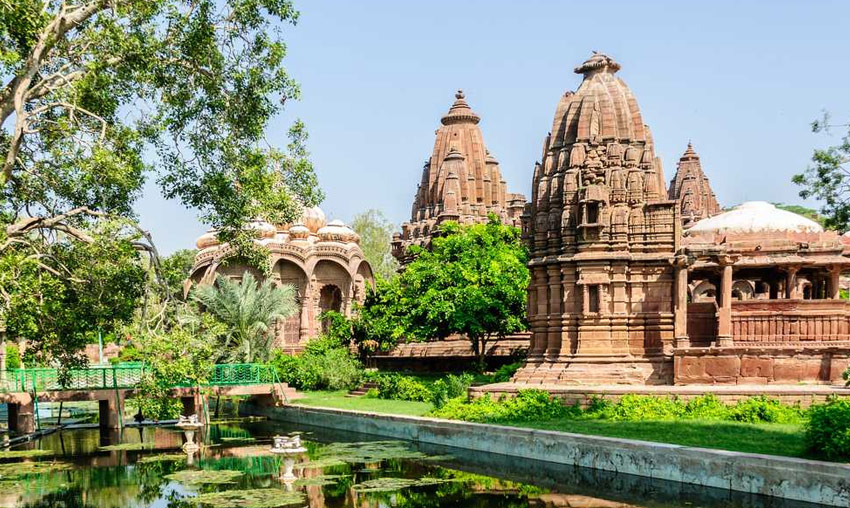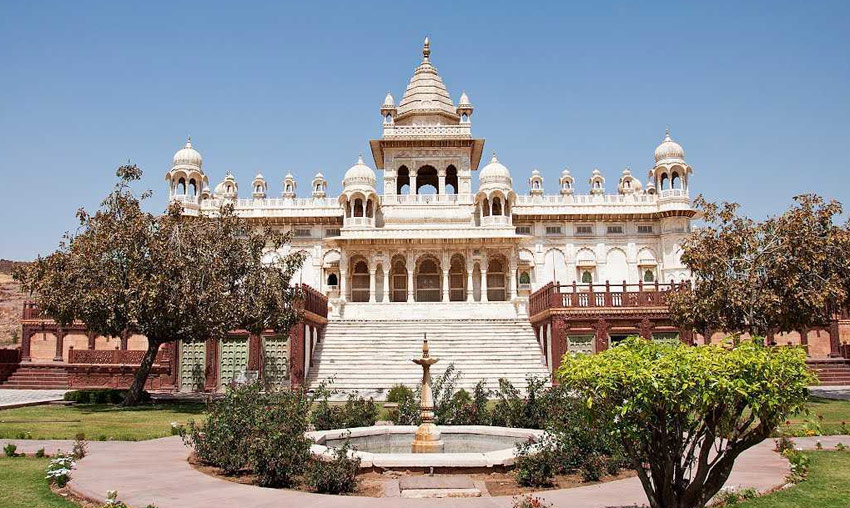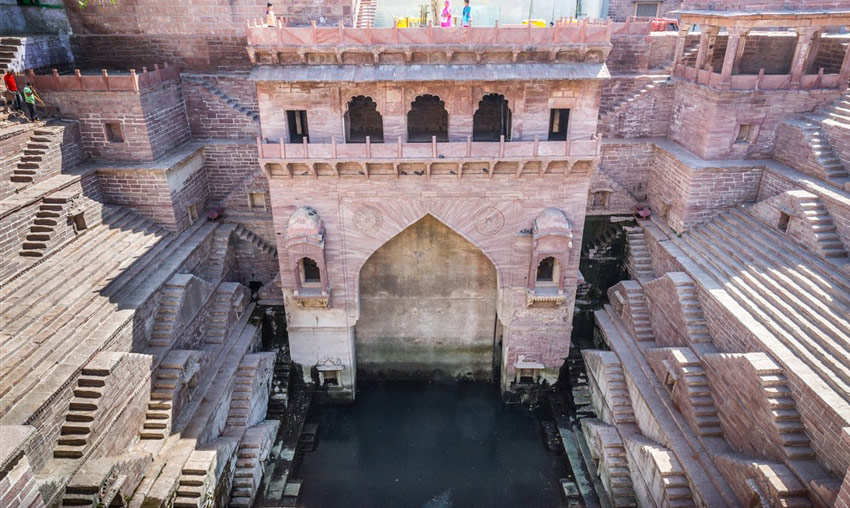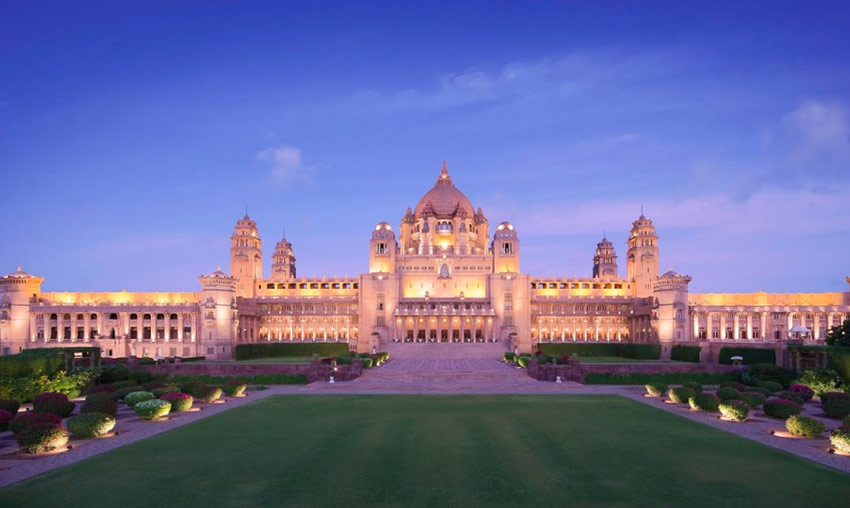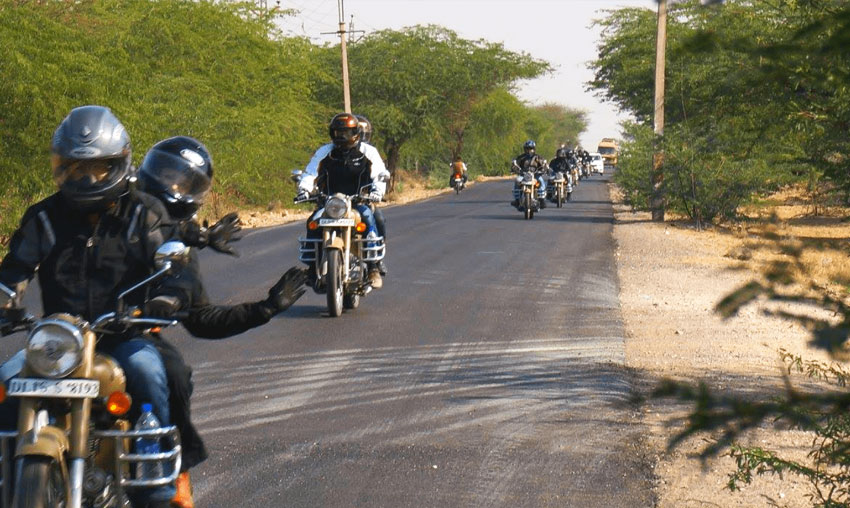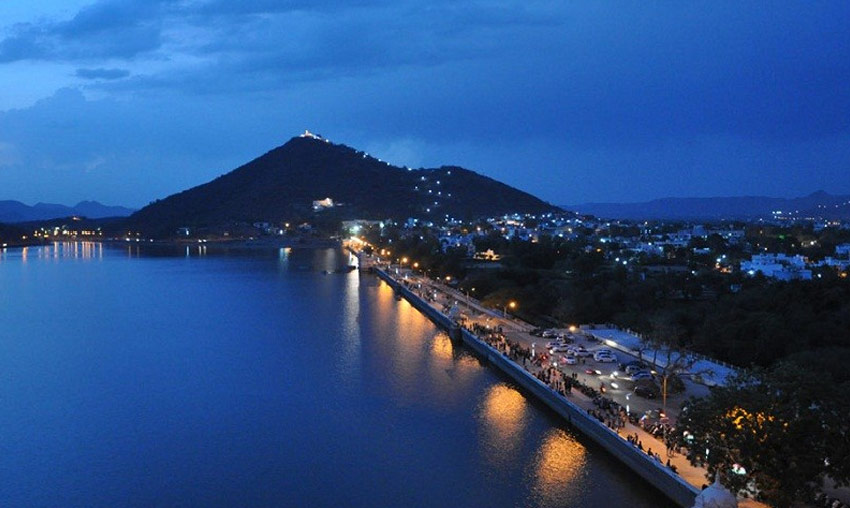Mehrangarh Fort Jodhpur | Timings, History, Images, Best Time
Rao Jodha constructed Mehrangarh, also called Mehran Fort, in Jodhpur in 1459. It is one of the biggest forts in the nation. It is protected by enormous walls and sits atop a 410-foot-high hill. One of Jodhpur’s most recognisable forts, it has been featured in numerous Bollywood and Hollywood films, including The Dark Knight Rises, The Lion King, and the more recent Thugs of Hindostan. Perched atop a hill, the fort boasts a grand entryway with seven gates. Victory Gate, Fateh Gate, Gopal Gate, Bhairon Gate, Dedh Kamgra Gate, Marti Gate, and Loha Gate are the names of these gates. Each of these has a very unique function and was constructed at a separate time.
One still has the scars from being struck by cannonballs, whereas the other has spikes that can defend it from attacks by animals and elephants. But to honour Maharaja Man Singh’s victory over the forces of Jaipur and Bikaner, Victory Gate was constructed. Luxurious palaces like the Phool Mahal (Rose Palace) and Sheesh Mahal (Glass Palace) are also located within the fort.
Visitors from all over the world are drawn to the fort by its magnificent history, majestic palaces, museums, galleries, and the elaborate carvings on its walls. One of Rajasthan’s well-stocked museums is located within the fort. Elephant’s Howdahs, Palanquins, Daulat Khana, Armoury, Paintings, and the Turban Gallery are the six galleries that make up the Mehrangarh Museum. Mehrangarh Fort’s tourist attractions include the National Geological Monument, Nagnecha Mataji Temple, Chamunda Temple, and Rao Jodha Desert Rock Park.
Mehrangarh Fort History
The fascinating history of Mehrangarh Fort dates back to 1459, when Rao Jodha, the 15th monarch of Rathore, established Jodhpur. Rao Jodha, son of Raja Ram Mal, moved his capital from Mandore to Jodhpur and controlled the city from there. On Bhaucheeria Hill, which was only 9 miles from Mandore, he then laid the fort’s foundation. Since the sun was Rathores’ primary deity and “Mehran” means “sun,” the fort was dubbed Mehrangarh Fort. The later Jodhpur kings, including Maldeo Maharaja, Ajit Singh Maharaja, Takhat Singh, and Maharaja Hanwant Singh, added several extensions in addition to the principal structure. There were many clashes between the rulers at those times, and then the Fort like this one was an object of great power and prestige.
Architecture of the Mehrangarh Fort Jodhpur
One may observe the fundamental architectural style of the mid-15th century as well as elements of 20th-century architecture because the fort and palaces were constructed over a 500-year span. The fort is 117 feet long and 68 feet broad. There were long walls that looked out over the surroundings. The Jayapoli gate is the most well-known of its seven gates. Over the course of 500 years, the fort’s construction underwent numerous changes. Many of the fort’s structures were built in the Mughal style when Maharaja Ajit Singh ruled.
There are a number of exquisitely designed apartments, including Moti Mahal (Pearl Palace), Phool Mahal (Flower Palace), Daulat Khana, Sheesh Mahal (Mirror Palace), and Sileh Khan, in addition to the seven gates that astound visitors. Raja Sur Singh constructed the Pearl Palace, also known as Moti Mahal. The Hall of Mirrors, also known as Sheesh Mahal, is well-known for its elaborate mirror decorations. Phool Mahal was established by Maharaja Abhaya Singh. The sandstone utilised in the palace’s construction demonstrates the exquisite artistry of Jodhpuri artisans.
Galleries of Mehrangarh Fort Jodhpur
Some of the well-known artefacts of the fort are:
Armoury
Great emperors like Timur and Akbar are on exhibit with their swords. In addition, there are firearms with gold or silver work and shields adorned with emeralds.
Paintings
This area is the subject of a full gallery. In the fort, you may view stunning Marwar paintings.
Turbans
The Mehrangarh Fort is the site of a variety of turbans worn by Rajasthanis during various festivities.
The Palanquins
These served as a means of transportation for the royals. The most beautiful palanquin designs, such as Rajat Khasa and Pinjas, may be found in the fort.
Howdahs of elephants
This is a type of two-compartment wooden seat that is carried on an elephant’s back when travelling. Within the galleries of Mehrangarh Fort, you may see some of the best palanquins.
Trivia About Mehrangarh Fort Jodhpur
One of the biggest, best-preserved, and most striking monuments is the fort. It is situated around four hundred feet above the ground on a perpendicular cliff.
Rao Jodha had to physically move a sage named Cheeria Nathji in order to build the fort. He cursed the king, saying that there would not be enough water for the fort. Later, Rao Jodha built him a house and a temple to appease him.
Folk dancers can also be seen performing in front of the main entrance.
Numerous Bollywood and Hollywood productions have been filmed here. Mehrangarh Fort used as the backdrop for the prison breakout sequence in the film The Dark Night Rises.
Activities At Mehrangarh Fort Jodhpur
Adventure seekers might also expect a small surprise at Mehrangarh Fort!
You will undoubtedly have an adrenaline rush if you zipline from the top of the fort. You may enjoy the breathtaking view of the Blue City as you cruise through Jodhpur.
Ten years old is the minimum age requirement. You will receive both verbal and written instruction once you get to the zipline office. Additionally, you will get the chance to practise on a brief trial zip.
Best Time To Visit Mehrangarh Fort
Winter is the ideal season to visit Mehrangarh Fort. You get a great chance to tour the entire fort during the cool, pleasant weather that lasts from October to March.
Winter mornings are the best time of day to visit the fort. As soon as breakfast is finished, head to the fort, which opens to visitors at 9:00 a.m. You can spend the remainder of the day at the local tourist attractions after two or three hours.
How To Reach Mehrangarh Fort
There are established air, road, and rail links between Jodhpur and all of India’s main cities. Trains are available daily from Jodhpur railway station, which has good connections to major Indian towns. The Rai ka Bagh railway station is the closest one. Airways: Jodhpur, one of Rajasthan’s most well-known airports, is currently undergoing an internationalisation process. Flights are available every day from all throughout the nation. Roadways: All of Rajasthan’s major cities as well as those in the surrounding states are reachable by road from Jodhpur. Express and premium bus services are available to the city. There are several ways to go around the city: autorickshaws, buses, cycle rickshaws, or Cabs
